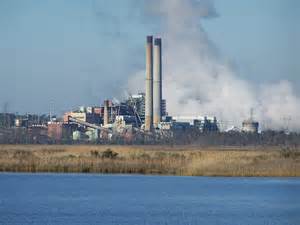This is an interesting resource to discuss in this series. Everyone would agree that we need food, water, and space – but do we need energy? Other creatures on this planet do fine without electricity, machines, and alternative transportation – do we really need it? You could debate this for hours, but the bottom line is we now have it and yes… we need it.
Miller1 begins this topic with a brief history of energy use by humans. Early humans survived on muscle power alone and would require about 2000 kilocalories per human/per day – most of this energy was obtained from their food. A modern human from the United States would require 2000 kilocalories/day to maintain their muscle power and an additional 600,000 kilocalories/day to maintain the machines and systems of our modern lives. This is 600,000 kilocalories/human/day.
The first alternative energy source was fire and was used to keep people warm and cook their food. When humans began farming, they used domesticated animals to do much of the heavy work of plowing and transportation. Later they began to use the wind to pump water from the ground and move sailing vessels across waterways. They learned to use flowing water as a mode of transportation and for grinding grain. They eventually used flowing water to produce electricity.
As we moved into the industrial age, machines would do a lot of our work but needed an energy source to do so. Wood was the initial fuel. Burning wood could produce steam that would operate the motors that would lead to some of our greatest innovations. Trains could haul people and goods over long distances in a much shorter time than domesticated animals could. The steam engine allowed vessels to travel in locations where wind was not reliable. Wood burning stoves would heat our homes and cook our food. However, the growing demand for wood led to its demise. We harvested it faster than new trees could grow back. We faced our first energy crisis.
We solved this crisis by switching from wood to coal. There were several problems with coal. One was the amount one needed to power our machines. You could transport tons of coal to local factories, coal cars on trains to power the locomotives, and in the hulls of ships to get them across the ocean – but the amount you need to move larger trains and ships provided a storage problem. Two, coal burns dirty. The air all around cities and factories became black with smoke, and tailings from the mining of coal polluted local waterways. Despite the pollution problem, humans needed energy and were fine with burning coal.
In 1859 humans discovered how to pump oil from the ground. Oil could be refined into diesel and gasoline and could power engines but did not require the storage space that coal did. So, transportation could now move more people and goods than coal would allow. Though coal was still used to produce our electricity – which we used for cooking and heating our homes, oil became the go-to energy source for transportation. Eventually many would switch from coal to natural gas (refined from oil or found in the ground near the oil) to produce electricity.
In the 1950s we discovered how to produce enormous amounts of energy by splitting uranium atoms. This new source of energy was used to produce electricity until the safety concerns became too high and nuclear power production decreased.
Today about 82% of our energy still comes from the burning of fossil fuels. There are pollution issues associated with this – including changing our climate – but the need for energy is greater now, with over 8 billion people on the planet. We have entered a new energy crisis. As with wood, fossil fuel sources are limited, demand is rising, pollution and habitat degradation from burning and drilling for fossil fuels is becoming a serious problem.
In our next article we look at evaluating the energy choices we currently have as to which may be the best choice for our future.
Reference
1 Miller, G.T., Spoolman, S.E. 2011. Living in the Environment. Brooks/Cole Cengage Learning. Belmont CA. pp. 674.
- Rattlesnakes on Our Barrier Islands; Part 4 – Thermoregulation - December 29, 2025
- Rattlesnakes on Our Barrier Islands; Part 3 – Envenomation - December 22, 2025
- St. Joe Red Tide Claiming Terrapins - December 15, 2025

